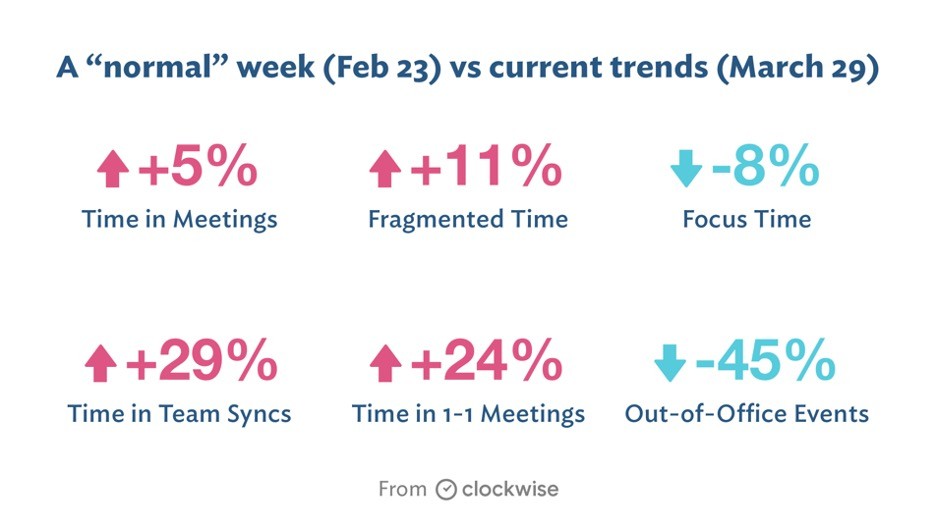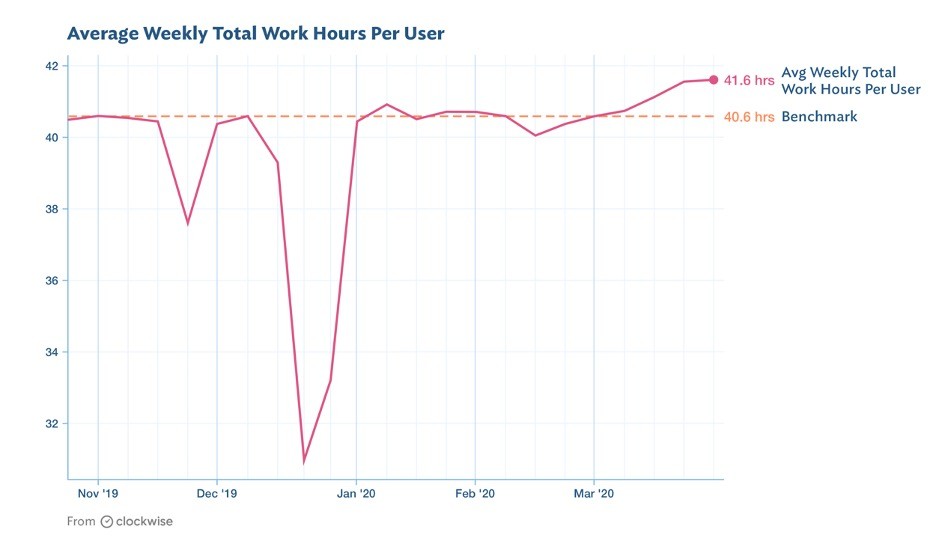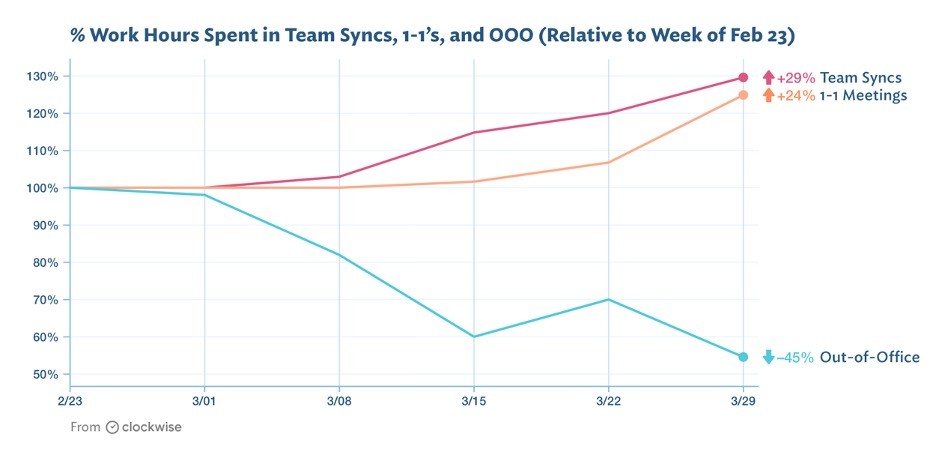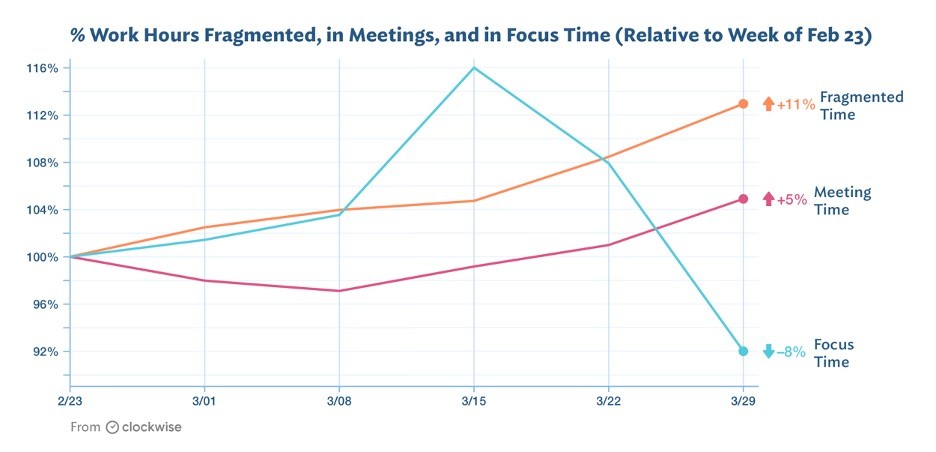If you feel like WFH has made your calendar more hectic than ever, it’s not just you. At Clockwise, we optimize tens of thousands of calendars. We wanted to see how COVID-19 was impacting people’s schedules and time allocation. Specifically, we wanted to know whether mandatory WFH is making workers more or less busy.
We found workers are definitely getting busier, working longer hours, and seeing our calendars get more chaotic. Here’s what we found.
How our calendars have changed
Compared with February 23rd, the last relatively “normal” week, by the fifth week of March, we saw the average worker:
- Spent 5% more time in meetings
- Spent an extra 1-1.5 hours per week in team sync meetings, a 29% increase
- Spent 24% more time in one-on-ones
- Saw a 45% decrease in out of office events
- Saw an 11% increase in Fragmented Time

Digging into the data
By the fifth week of March, we saw the average employee was putting in an extra hour of work per week.
Here’s the data since November. The longer time horizon includes the winter holidays, Martin Luther King Day, and President’s Day, which shows how different these trends are from normal.

Total meeting time increased by 5%.
The sharpest increase we’ve seen correlating to COVID-19 dates is team sync events. The average worker is spending an extra one to one and a half hours per week in team sync meetings, a 29% increase.

We’re also seeing a 24% increase in hours spent in one-on-ones since February. We saw a small peak in the third week of March when shelter in place was fully in effect in SF and being implemented in other cities. Many of those 1:1s might have been scheduled to discuss companies’ WFH policies.

Unsurprisingly, we’ve also seen a 45% decrease in “out of office” events. We saw an interesting peak of about an extra hour of meeting time per week on average right before San Francisco mandated shelter in place.
Total event time, which was flat until COVID-19, is also increasing steadily.
This is also true of total work hours.
We’re also seeing fragmented time tick up.

Compared with February, 23% more workers have fragmented time on their calendars. And those with fragmented time on their calendars saw it go up by 11%. Fragmented time is chunks of time to work that are shorter than two hours. It stands, in contrast, to focus time, which is two-hour or more blocks of time for focused work. More Fragmented Time is a predictable result of the influx of new events appearing on workers’ calendars.
To get at these numbers, we looked at 17,000 users who were active every week in 2020 and normalized by each individual’s working hours.
